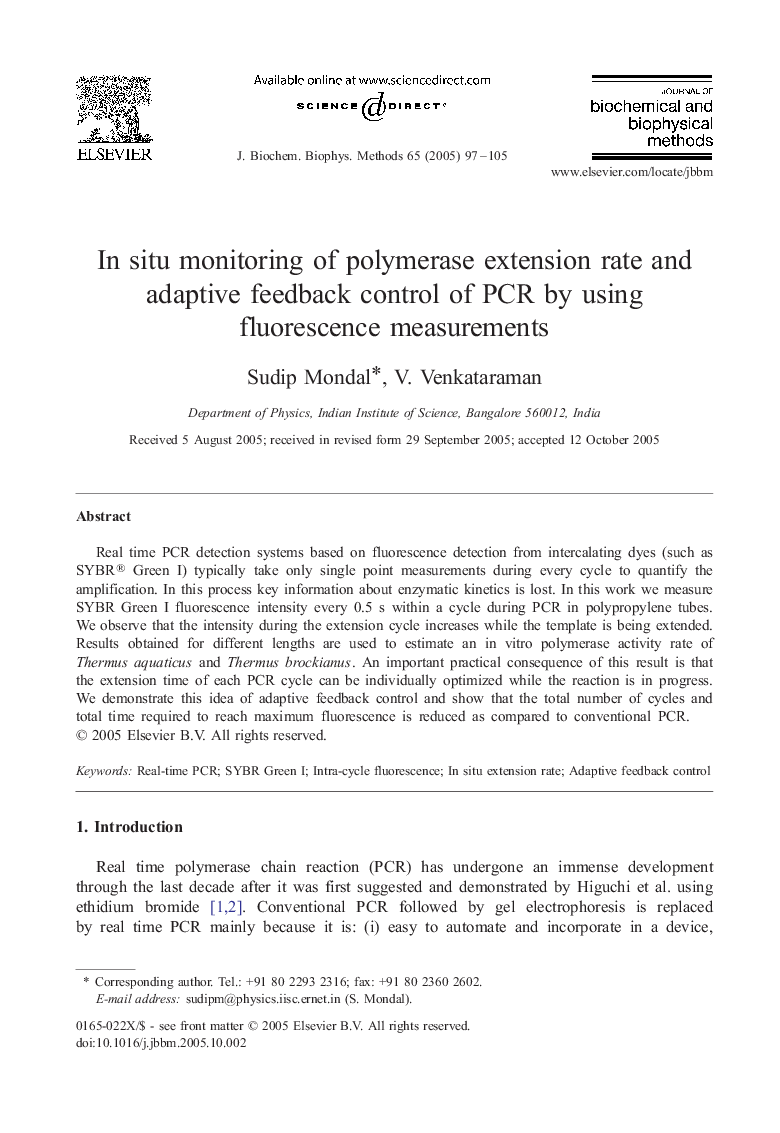| Article ID | Journal | Published Year | Pages | File Type |
|---|---|---|---|---|
| 9891230 | Journal of Biochemical and Biophysical Methods | 2005 | 9 Pages |
Abstract
Real time PCR detection systems based on fluorescence detection from intercalating dyes (such as SYBR® Green I) typically take only single point measurements during every cycle to quantify the amplification. In this process key information about enzymatic kinetics is lost. In this work we measure SYBR Green I fluorescence intensity every 0.5 s within a cycle during PCR in polypropylene tubes. We observe that the intensity during the extension cycle increases while the template is being extended. Results obtained for different lengths are used to estimate an in vitro polymerase activity rate of Thermus aquaticus and Thermus brockianus. An important practical consequence of this result is that the extension time of each PCR cycle can be individually optimized while the reaction is in progress. We demonstrate this idea of adaptive feedback control and show that the total number of cycles and total time required to reach maximum fluorescence is reduced as compared to conventional PCR.
Related Topics
Life Sciences
Biochemistry, Genetics and Molecular Biology
Biochemistry
Authors
Sudip Mondal, V. Venkataraman,
